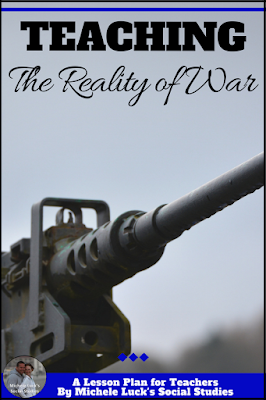As a high school teacher that often watched those snotty, little freshmen grow into young men enthusiastic about joining the service to fight the bad guys (especially after 9/11), I was always concerned with making sure my students understood what that would mean for them beyond the glamorous view often depicted in American movies.

With the movie, American Sniper, still making its rounds in my Netflix feed and the thoughts shared in this USA Today post coming back to my attention, it brings concern to me once again, hoping that our young men do not only see the excitement around the movie, but also see the reality that can hold so many side effects for our soldiers.
My step-father and uncle dropped out of high school at 17 years old to join up to fight in Vietnam. While my uncle came back able to talk about his experiences, my step-dad was a different story. His legs shook non-stop, his nightmares awoke the whole house, and his personality was darkened, all as a result of his horrific experiences. The only information that was ever shared was that he had to do unspeakable things, and while he was never diagnosed, he was your typical definition of PTSD.
Do our young men see this possibility when they watch the Hollywood versions of war? Or do their minds even allow them to see reality, when they are so mesmerized by the ideas of glory and glam?
In no way am I suggesting our young men should not go to serve. I joined the Air Force in 1988, and my husband served in the Persian Gulf War on a Navy ship in the Gulf. More importantly, many young men need direction and structure that the military can provide like no other institution.
Still, war should be one of those controversial topics discussed in our classes. Teaching this aspect of war is one that can easily be added to the curriculum.
Ideas for Teaching the Reality of War
- Invite in the Vietnam and Gulf War vets to tell all sides of the story.
- Read excerpts from books on the reality of war, especially those written from a soldier’s point of view.
- Investigate letters from the soldiers who have shared their glory and their anguish. ANZAC soldiers posted many of their WWI letters so the world could understand their sacrifice.
- Ask the local military recruiters to bring in currently serving soldiers that have done a combat tour to talk with your class.
- Skype with a military battalion currently stationed overseas. Allow your students to ask the questions to guide discussion.
- Welcome military wives into your classroom so they can share their experiences being tied to the military way of life.
And allow your kids (yes, they are still kids in high school) to realize that serving in the military is an awakening. They will see things and do things not seen or done by civilians, and it will have a lasting effect on them.
In the end, students need to be aware of the risks, as well as the benefits. Make sure they know there is a difference.

Happy Thinking!